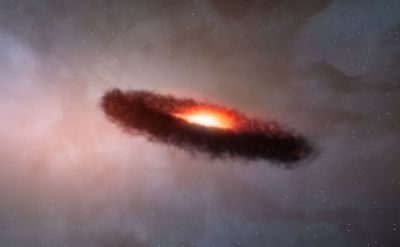Just before the planets form

Artist’s impression of the disc of dust and gas around a brown dwarf
By ALMA (ESO/NAOJ/NRAO)/M. Kornmesser (ESO) (http://www.eso.org/public/images/eso1248a/) [CC BY 4.0 (http://creativecommons.org/licenses/by/4.0)], via Wikimedia Commons
Circumstellar discs spinning around newly born stars are modern day alchemists, transforming dust and gas into astronomical gold: planets. How exactly remains a mystery on which an EU-funded project aims to shed light.
Circumstellar discs have been intensively observed from the optical to millimetre wavelengths, from the ground and space. Numerous theoretical models have also been developed to describe how circumstellar discs disappear, leading to planetary discs and eventually planets. However, past studies relied on poor statistics, with only a few known objects.
The EU-funded 'Analysis and modelling of multi-wavelength observational data from protoplanetary discs' (DISCANALYSIS) project aims to combine a wide range of observations to constrain all aspects of disc structure and dust content. For the first time, 85 circumstellar discs are probed from optical to near-infrared wavelengths in scattered light to the millimetre regime corresponding to thermal emission.
Besides archived observations, the DISCANALYSIS team has access to the latest results from ongoing observational programmes, such as the Herschel Space Observatory and the Hubble Space Telescope. These data are folded in to find quantitative evidence of dust evolution in the disc: from how grains grow up to millimetre-sized particles, to larger grains to fluffy aggregates that will ultimately give birth to kilometre-size planetesimals.
To reproduce all observations of the discs as coherently as possible, 40 individual theoretical models are being developed. The data sets compiled within the DISCANALYSIS project and model results should cover all evolutionary status until discs start to dissipate. By the completion of the project, all aspects of circumstellar discs evolution until the first stages of planets' formation that are poorly understood will have been explored.
published: 2015-05-08

